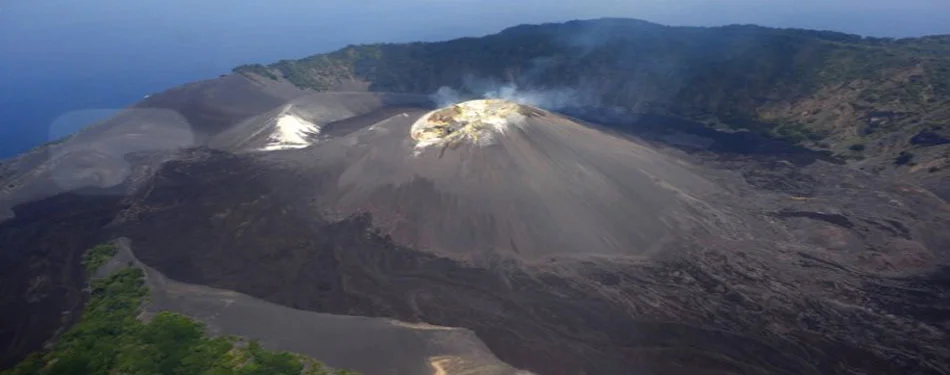Discover the Sleeping Volcano: A Geological Marvel

Among the flaming natural wonders of Earth, the "Sleeping Volcano" is a fascinating
mystery. These geological wonders, in contrast to their more active counterparts, are
dormant, their calm exteriors concealing a fiery power beneath. We will discover the
mysteries that lie dormant beneath the exteriors of sleeping volcanoes as we journey
through this fascinating world.
What is the Sleeping Volcano?
So, what exactly is a sleeping volcano? In geological terms, a sleeping volcano is often
referred to as a dormant volcano. Unlike an extinct volcano, which is believed to have
ceased all geological activity, a sleeping (or dormant) volcano has not erupted in
recent history but retains the potential to awaken in the future. These giants can
remain inactive for hundreds, thousands, or even millions of years before showing any
signs of awakening.
One may wonder, which volcano is considered a sleeping volcano? The answer is not
straightforward, as dormancy can vary significantly among different volcanoes around the
world. Typically, volcanologists classify a volcano as dormant if it has not erupted in
the past 10,000 years but is situated in a region with ongoing geological activity that
could lead to future eruptions.
The Longest Sleeping Volcano
When discussing the longest-sleeping volcano, it's important to consider volcanoes that
have maintained a lengthy period of dormancy yet still possess the capacity to erupt.
One such example is the Yellowstone Caldera in the United States. Though not a classic
conical volcano, it is a supervolcano that has not had a significant eruption for
approximately 640,000 years. Its long sleep does not diminish the potential for future
activity, making it a subject of intense study and monitoring by scientists.
The Dormant Volcano of Andaman

The Andaman Islands, a pristine archipelago in the Bay of Bengal, is home to the only
confirmed active volcano in South Asia—the Barren Island volcano. However, when
referring to the "dormant volcano of Andaman," we're generally talking about the
neighboring Narcondam Island volcano. Though less famous than its active counterpart,
Narcondam is a fascinating example of a sleeping volcano. It has not erupted in recent
historical times, but its well-preserved crater and fumarolic activity suggest it's
merely in a dormant phase.
Volcanoes of Andaman: A Closer Look
The volcanoes of Andaman, primarily Barren Island and Narcondam, present a stark contrast
between active and dormant volcanic life. Barren Island continues to engage in periodic
eruptions, the most recent being in the 21st century, reminding us of the dynamic nature
of Earth's geology. In contrast, Narcondam remains quiet, offering scientists a unique
opportunity to study a volcano in its dormant phase without the immediate threat of
eruption.
Understanding the volcanoes of Andaman not only provides insight into the geological
activity of the region but also helps scientists predict and prepare for potential
future eruptions. These natural laboratories allow researchers to explore the signs that
precede volcanic activity, contributing valuable knowledge to the global scientific
community.
The Importance of Monitoring Sleeping Volcanoes
Monitoring sleeping volcanoes is crucial for several reasons. Firstly, it helps
scientists gather important data on seismic activity, gas emissions, ground deformation,
and other indicators of volcanic unrest. This information is vital for predicting
potential eruptions and implementing timely evacuation plans, thereby minimizing the
impact on human life and property.
Additionally, studying dormant volcanoes helps scientists understand the lifecycle of
volcanic activity. By comparing active, dormant, and extinct volcanoes, researchers can
better predict the behavior of other volcanoes worldwide, contributing to global safety
and preparedness efforts.
The Dual Nature of Sleeping Volcanoes
Sleeping volcanoes embody the dual nature of nature's creations—they are both beautiful
and potentially destructive. Their appearance and lush surroundings attract tourists and
nature lovers, contributing to local economies through tourism. However, their beauty
hides the power of their fiery nature, capable of awakening with little warning.
This dual nature serves as a reminder of the respect and caution we must maintain toward
our planet's geological phenomena. While we enjoy the scenic landscapes and natural
wonders, we must also remain vigilant and prepared for the potential awakening of their
dormant power.
Conclusion
The sleeping volcano remains one of Earth's most fascinating geological marvels. From the
longest-sleeping volcanoes like Yellowstone to the dormant wonders of Andaman like
Narcondam, these geological features offer invaluable insights into the Earth's inner
workings. They remind us of the planet's dynamic nature, the importance of scientific
monitoring, and the need for preparedness in the face of natural disasters.

